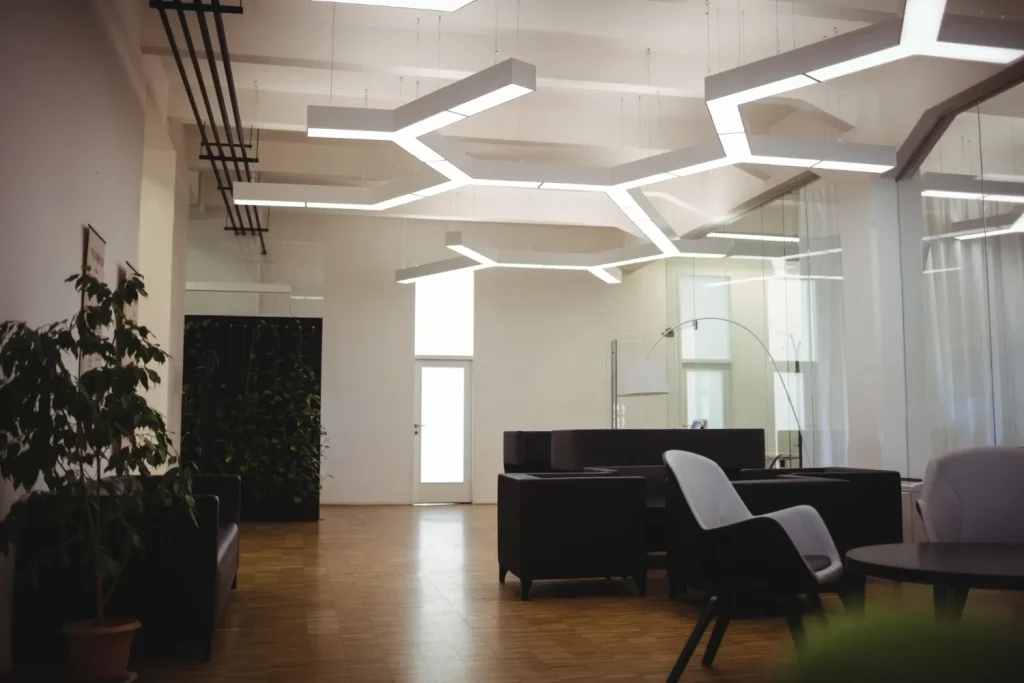
Upgrading lighting in your office can be a game-changer — more comfort, better productivity, lower power bills. Before making that call to an electrician, though, there are quite a few things to take into consideration so that your upgrade flows smoothly and delivers lasting value. This guide will walk you through what to think about, what to ask, and what to prepare if you plan to engage with commercial electrical repair services.
1. Why Upgrade? The Key Benefits
Old fluorescent tubes that hum. Bulbs that burn out in the middle of a meeting. Hot rooms in summer because the ceiling lights add too much heat. Your electric bill seems a tad higher than you’d expected. These are signs it’s time for something better. Modern LED fixtures last longer and use less energy. Many offices see their lighting costs drop quickly once they switch. Why should you miss out, right?
2. Know The Lighting Standards And Levels You Need
It’s tempting to just “brighten everything,” but that’s inefficient and sometimes counterproductive. Think about how people actually use your space. Matching the lighting level to usage and work type is essential.
- Recommended illuminance: For general office areas, the Illuminating Engineering Society (IES) recommends around 300-500 lux (≈30-50 footcandles) on desk surfaces. Task lighting (e.g., for drafting, reading, and detail work) might need more.
- Uniformity & glare: Light should be distributed evenly. Avoid harsh contrasts or shiny surfaces that cause glare. Fixture placement, diffusers, and layout matter.
- Color rendering/color temperature: 80+ CRI is best to ensure that the colors are seen as correct. Cool whites (4000K) will be more alerting, and warmth (3000–3500K) will be more relaxing. Neutral (3500–4000K) is usually best in the vast majority of standard office environments.
3. Controls, Sensors & Smart Features: Big Savings Add-Ons
Simply swapping fixtures saves energy, but controls can stretch savings further. A motion sensor in a conference room means lights don’t burn all day when nobody’s inside. Daylight sensors near windows adjust brightness depending on the sun. Zoning lets you dim certain areas without affecting the whole floor. Timers come in handy for exterior lights or parking areas.
4. Code, Safety & What Your Electrician Needs to Know
When you reach out to a firm offering commercial electrical repair services in TX, make sure you discuss these aspects. Lighting upgrades aren’t just swapping bulbs.
- National Electrical Code (NEC): As of September 1, 2023, Texas adopted the 2023 NEC as the minimum standard for all electrical work under the Texas Electrical Safety and Licensing Act.
- Permits and inspections: Permits are commonly required in Texas jurisdictions for commercial lighting retrofits or modifications. The work can be subject to inspection for safety and compliance.
- Load and wiring capacity: Ensure that your panel capacity and power distribution meet the requirements of the new fixtures if you want higher output LED fixtures.
- Thermal management & fixture quality: LEDs need optimal heat dissipation (design, material, driver specs). Low thermal performance can drastically reduce lifespan.
- Safety certifications: Listing to UL or equivalent, proper fixtures for damp locations if required, proper grounding, and surge protection when required.
5. What To Ask / Prepare Before Calling an Electrician
To make sure your conversation with a contractor goes well, you should come prepared. Start by taking a quick inventory. Lay out where fixtures are, note wattages, and check their condition. Note the times lights are in use and changes you’d like to see.
Combining all that together makes it easier to establish a realistic price. So, from that, you can balance cost versus performance. Then, you’re all set to meet the contractors. Get them to give you references and shop around for several estimates, so you can be sure that you’re paying a fair price.
Commercial Electrical Repair Services in Texas
Upgrading your office lighting is one of the smartest moves you can make if you want to save energy, reduce maintenance, improve employee comfort, and even enhance productivity. But to achieve all those benefits, you’ll need to do your homework: figure out your lighting needs, educate yourself about codes, research rebates, design controls, and hire the right professional. If you’re based in Texas and need reliable assistance, consider contacting Campbell Electric. Our experts can help you assess your current lighting, propose smart upgrades, ensure compliance, and execute the work safely. When done well, the upgrade pays off many times over.
